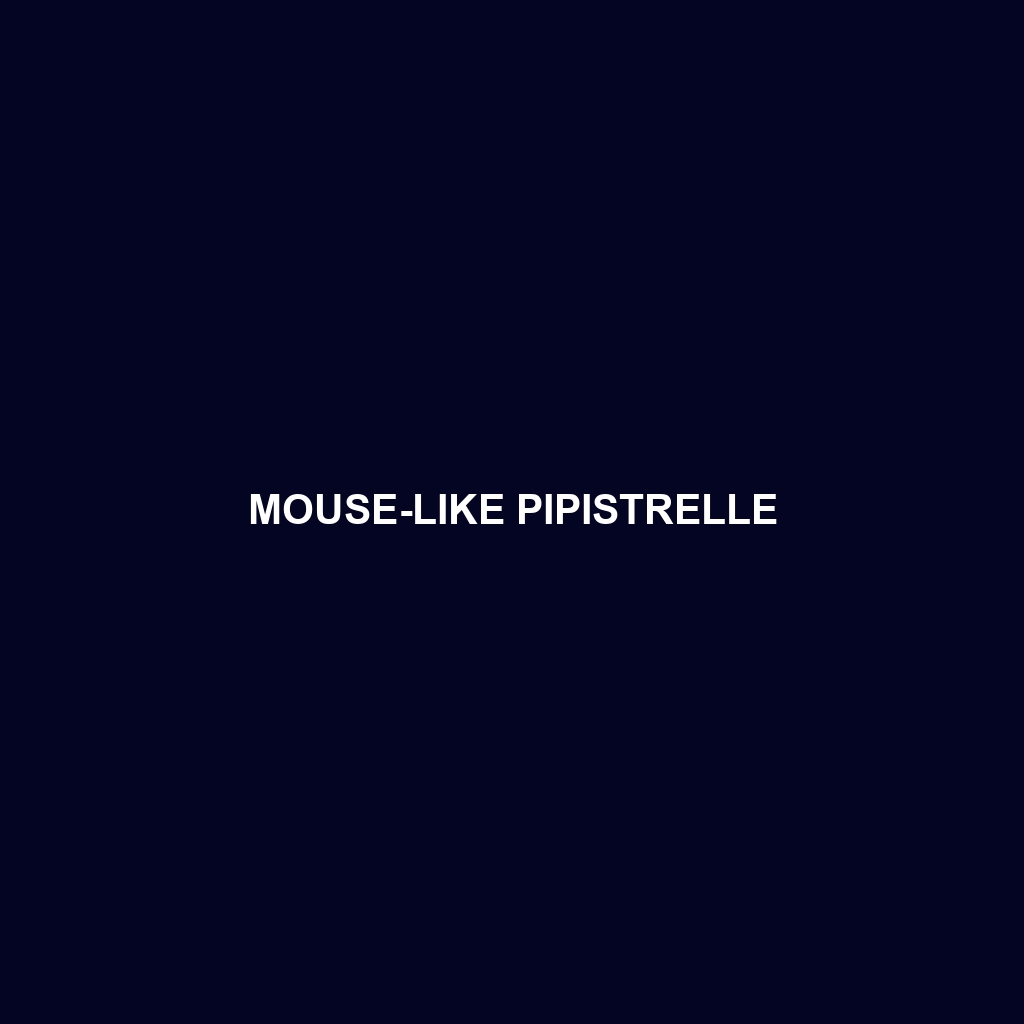Mouse-like Pipistrelle
Common Name: Mouse-like Pipistrelle
Scientific Name: Hypsugo savii
Habitat: The Mouse-like Pipistrelle, primarily found in parts of Europe and Asia, inhabits a variety of environments. This species prefers wooded areas, urban gardens, and rural landscapes that provide ample roosting sites such as tree hollows, buildings, and rock crevices. It thrives in temperate climates, often near water bodies like ponds or streams where insect populations flourish.
Physical Characteristics: The Mouse-like Pipistrelle is a small bat, averaging between 4 to 8 grams in weight and a wingspan of approximately 20 to 25 cm. Its fur is soft and typically a brownish color on the dorsal side, with a lighter, almost grayish underside. Distinctively, it has a pointed snout and large ears, which are proportionately longer than many other bat species. The small size and mouse-like appearance aid in its identification among similar species.
Behavior: These bats are primarily nocturnal, emerging at dusk to hunt for insects. They are known for their fast and agile flight patterns, enabling them to catch prey mid-air. During the day, they roost in social groups, often found clinging to various surfaces in their chosen habitats. The Mouse-like Pipistrelle exhibits echolocation capabilities, proficiently navigating through dense vegetation while foraging.
Diet: The diet of the Mouse-like Pipistrelle consists mainly of small flying insects, such as moths, flies, and beetles. They actively forage in open spaces and are particularly attracted to areas with abundant insect activity, such as near lights or over water bodies. This species plays a crucial role in controlling insect populations, making it an integral part of the ecosystem.
Reproduction: Breeding typically occurs in the late spring to early summer, with females giving birth to one or two pups after a gestation period of approximately 5 to 6 weeks. The pups are born hairless and completely dependent on their mothers. Post-birth, the mother provides nourishment and protection, and by late summer, the young bats start to emerge alongside adults to forage for food.
Conservation Status: The current conservation status of the Mouse-like Pipistrelle is classified as “Least Concern” according to the IUCN Red List. However, habitat destruction and climate change pose potential threats to their populations, emphasizing the need for ongoing monitoring and conservation efforts to ensure their stability and continuity.
Interesting Facts: One fascinating aspect of the Mouse-like Pipistrelle is its mimicry; its flight pattern can resemble other species, which may provide an advantage against predators. Additionally, this species is known for its ability to thrive in urban areas, showing flexibility and adaptability in various environments.
Role in Ecosystem: The Mouse-like Pipistrelle plays a vital role in maintaining the ecological balance by controlling insect populations. Its presence helps enhance biodiversity in its habitats and serves as prey for larger predators, illustrating its importance in the food web. By contributing to pest control, this bat species aids in the sustainability of agricultural systems and natural ecosystems alike.
